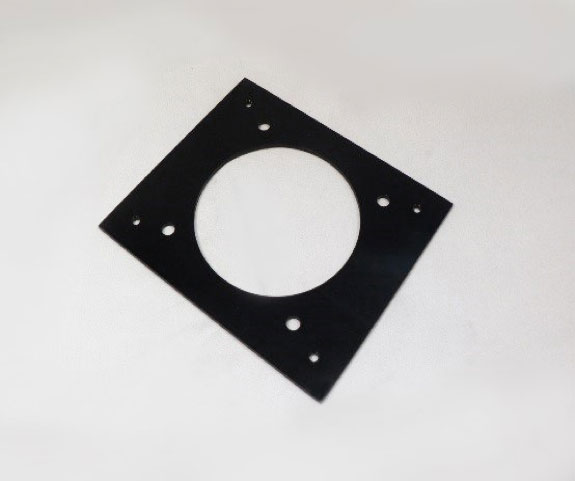CNC machining
CNC machining can create parts with taut tolerances (up to ± 0.025 mm) and well detail from a variation of plastic supplies or metal.
Because of the subtractive knowledge of CNC, slight tool marks will be observable on the surface of the part after machining. Different finishing and post-preparing techniques can be applied to improve the wear obstruction, surface brutality, and visual properties of the CNC machined parts.
To talk over the most common metal CNC surfaces to support you in choosing the most reasonable surface completion for your application.
Standard, As-Milled Finish

“As-Milled” is the standard completion which effects in a surface harshness of 125 uin. On the part there are the slight tool marks are noticeable. To improve the surface roughness to 63, 32, or 16 uin will raise the amount of developing processes and possible rise costs.
The standard machined surface roughness is 3.2 μm (125 μin). A final cutting pass can be applied to decrease the roughness of a surface down to 0.8, 1.6, or 0.4 μm (63, 32 or 16 μin). This will raises the cost of creating a part, as additional machining steps and tighter quality control are needed.
The machined parts can be additionally smoothed or cleaned to improve their surface quality and style by decreasing their surface unpleasantness. Smoothing and cleaning will evacuate some material influencing the dimensional resilience of the part.
Bead Blast Finish

A light surface with a dull finish is created by blowing small glass beads against the part in selected areas. Extra cost may happen if the design needs a significant covering of surfaces or holes that do not need bead blasting.
Mostly, the usage of Bead blasting is for visual purposes. It is a physical process, so the output will depend to some degree on the ability of the worker. The magnitude of the air pressure and the magnitude of the glass beads are the key process limits. Glass beads are available in different sizes (from courser to very well) just like sandpaper comes in different sizes and ratings.
Anodizing, Type II (Sulfuric Acid Anodizing)

Anodizing is known as electrolytic oxidation process. In this process, the part which is treated is made an anode in an electrolytic solution. Type II coatings produce a corrosion-resistant, uniform coating. The metal pieces can be dyed in various colours after anodizing – red, black, or gold are most common. The medal part presented here is not dyed. Anodizing is typically related to aluminium parts.
Anodizing Type II is likewise called “brightening” or “standard” anodizing and can make coatings with a thickness of up to 25 μm. The common coating thickness depends on the colour and can change between 8-12 μm for parts dyed black and 4-8 μm for parts that are not dyed.
Anodizing, Type III (Hard Anodic)

The third (III) type of coatings is to produce an attire resistant layer of definite thickness and the corrosion resistance done with second (II) type coatings. Parts can be dyed in changed colors after anodizing – gold, black, or red are most common. The piece which is displayed here is dyed black. Anodizing is typically related to aluminum parts.
Type III anodizing generated thick, ceramic coatings with a great density that offer wear resistance and excellent corrosion, appropriate for useful applications. It needed though nearer process control related to type II anodizing (greater current density and constant solution temperature close to 0oC), so the charges are high.
Powder Coat Finish
The powdered paint is sprayed onto a part that is then sent through an oven to bake the paint onto the part. This makes a solid, wear and consumption safe layer that is tougher than standard artistic creation techniques. A varied variation of colors is existing to complete the wanted part appealing. Typically, the powder coating is used in military applications.
Both the spray painting and powder coating process are similar, however, the “paint” is a dry powder as an alternative of a liquid. The parts are first clued-up with a possible chromatin or phosphating coat to enhance their corrosion resistance, then covered with dry powder consuming an electrostatic “spray” gun and then treated at a high temperature (typically in an oven at 200oC).
Numerous layers can be applied to create a thicker covering and ordinarily, thickness changes from around 18 μm up to 72 μm. A different range of colors is accessible.
FirstPart CNC Machining in China
First Part offers high quality, thermoplastic injection molding service for all your plastic part projects in China. We also offer low-volume manufacturing that serve small quantities from 50 to 10000 parts and produce for mass production. Our engineers are always available to advice on the best processes, materials and design optimization to ensure cost-savings, quick turnaround and the production of parts that are 100 percent defect and issue free.
